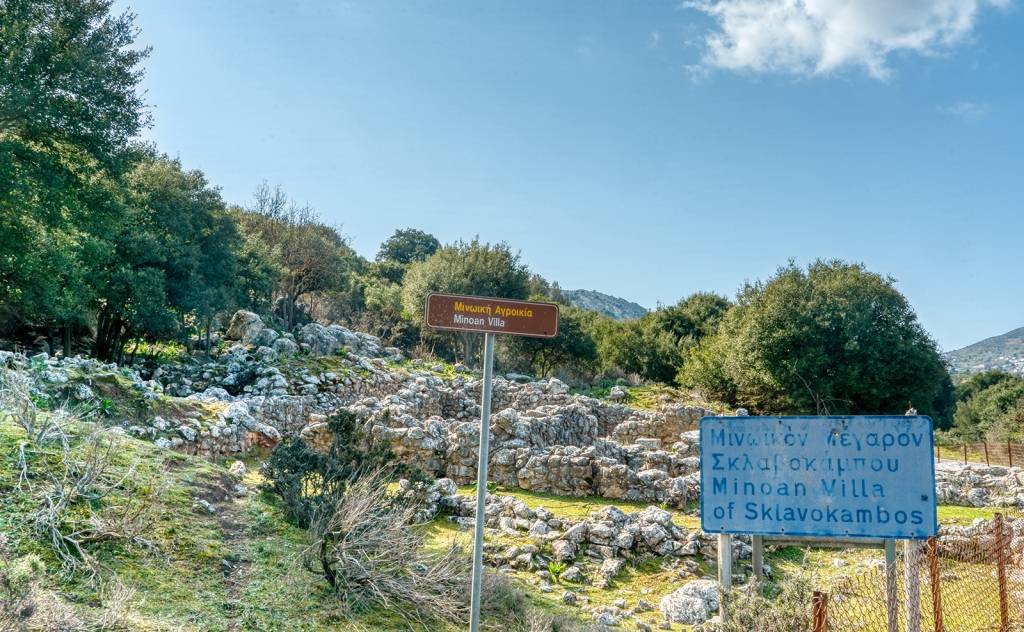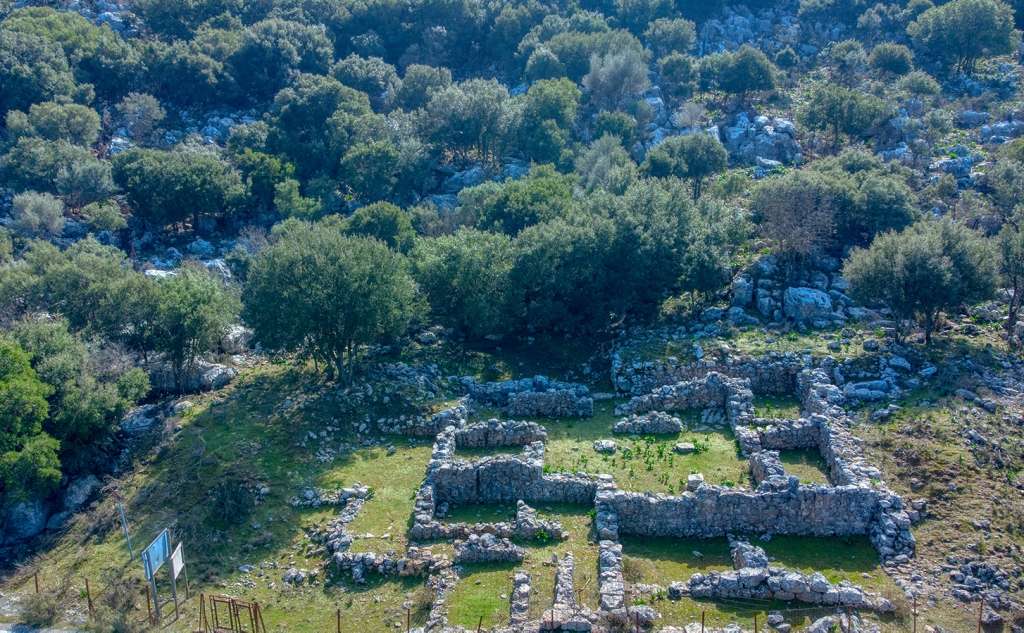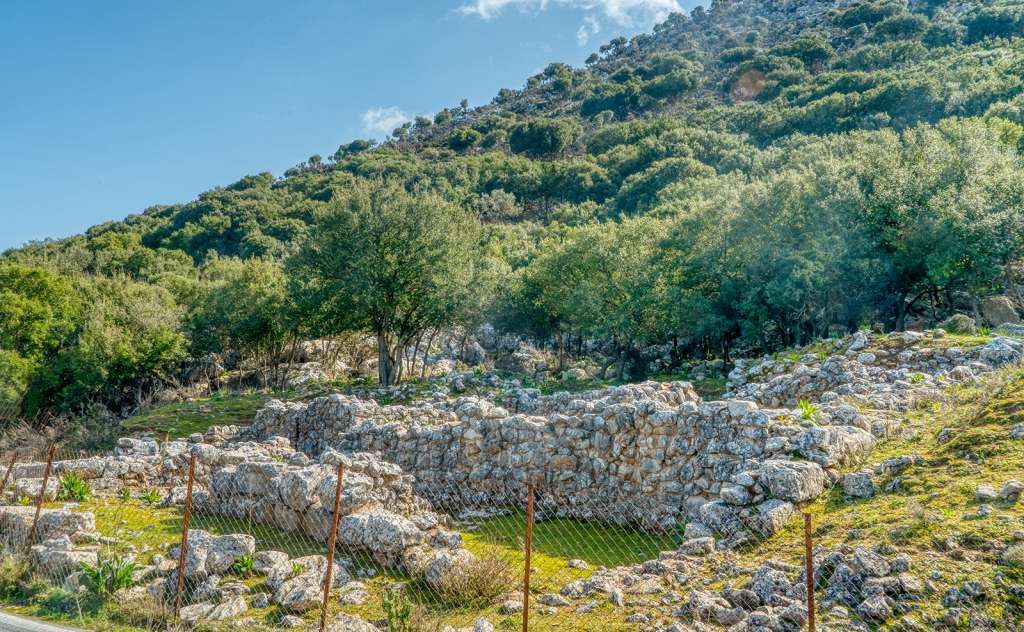Sklavokampos Palace at Gonies
The Minoan Palace of Sklavokampos is located on the road that leads from Tylissos to Anogia, after the fork to Astyraki. It is 22 km from Heraklion and is built in the long and narrow Sklavokampos valley at an altitude of 600 metres. According to tradition, the valley was named so because, during the Cretan revolutions, seven Turkish pashas were enslaved there.
In 1930, during the opening of a road, the Palace was discovered, dating back to the Late Minoan period (1450 BC). Archaeologist Spyridon Marinatos carried out the excavations at the site. The mansion was built on the northern communication road of central and western Crete, having the opportunity to exploit the region's wealth. It was a high-rise building with a central hall, which resembled the three Megaras found in Tylissos.
One of the most important findings of the excavation is the 39 clay seals found in a pile, fallen from the upper floor, altogether. These seals document the trade that took place, and each had different representations imprinted on it. Specifically, the representations on a seal have been found in Zakros, Gournia and Agia Triada. Painted pottery, cups, jars, various tools, a clay ox head and a stone jar used in rituals were also found.
In recent years, rescue excavations in the area around the Megaron have brought to light remarkable Late Minoan buildings, so it is most likely that there was a settlement at the site and not an individual type of settlement.





